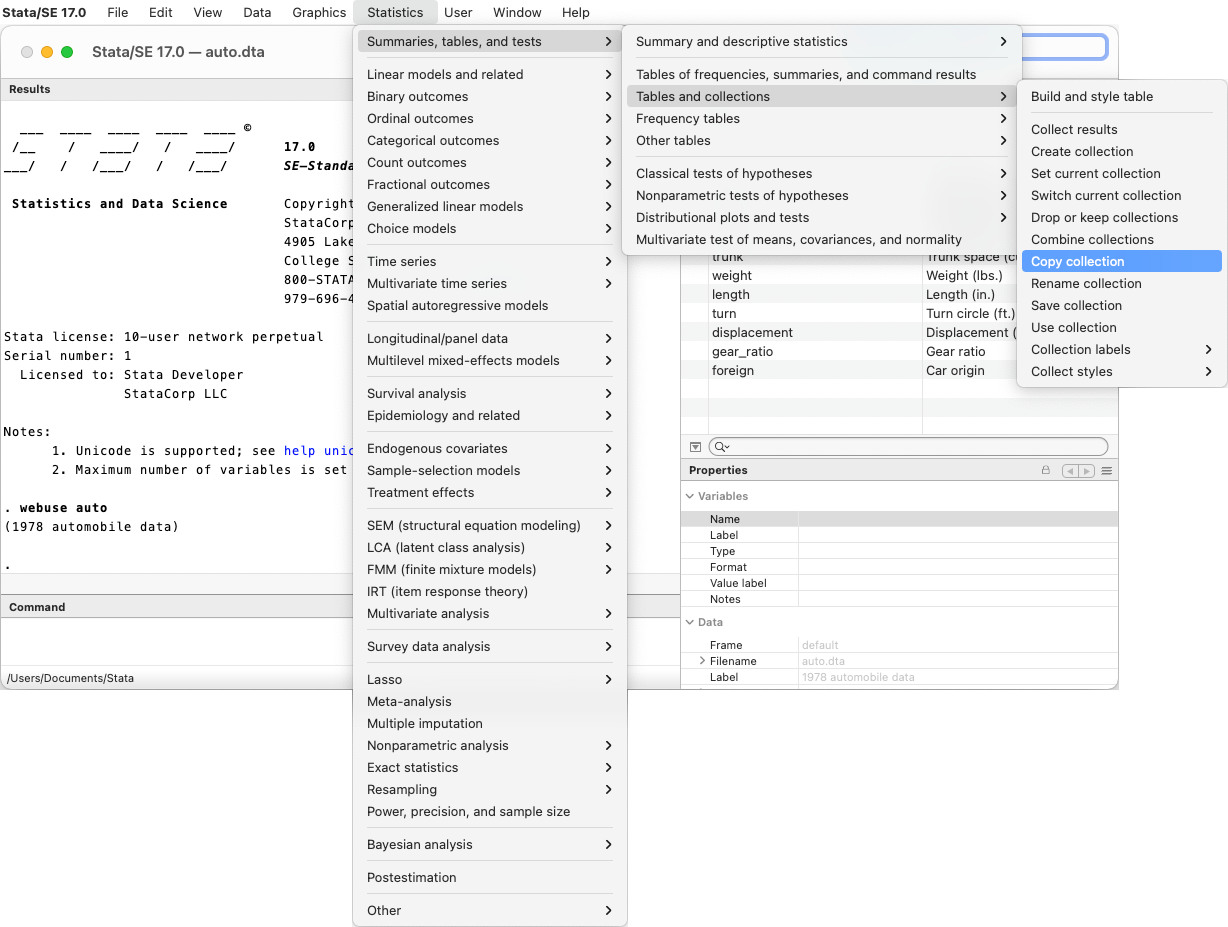Stata 17 for Mac is available as a universal application. This means that the same application will run natively on both Macs with Apple Silicon and Macs with Intel processors. If you have an Intel Mac and plan on upgrading to a new Mac with Apple Silicon, you can simply migrate from your old Mac to the new Mac and Stata will just work—there is no need to reinstall Stata or download a different application.
Macs with Apple Silicon include the new MacBook Air, MacBook Pro, and Mac mini, all with M1 processors. The M1 chip promises greater performance and greater power efficiency. This will be of great interest to our Stata-for-Mac users, many of whom use Mac laptops. Although this first set of Macs is considered to be an entry-level set, we have found that M1 Macs natively running Stata outperform Intel Macs by 30–35%. They even greatly outperform or perform as well as Intel Macs that cost more than twice as much! These performance comparisons are based on timings of Stata’s extensive suite of certification scripts run on multiple Macs with Intel processors and Macs with Apple Silicon. The suite of certification scripts includes various data management, graphics, and estimation commands.
And for users who insist on only using software native to Apple Silicon on their Apple Silicon Macs, you’ll be happy to know that no part of Stata 17, from the installer to the application itself, requires the use of Rosetta 2. Stata for Mac is 100% native to Apple Silicon.
Stata functions the same way regardless of whether you’re running Stata natively on an M1 Mac or on an Intel Mac, and no special license is required for the M1 Mac. Intel Mac users should note that we will continue to support and release new versions of Stata for Macs with Intel processors for years to come.


